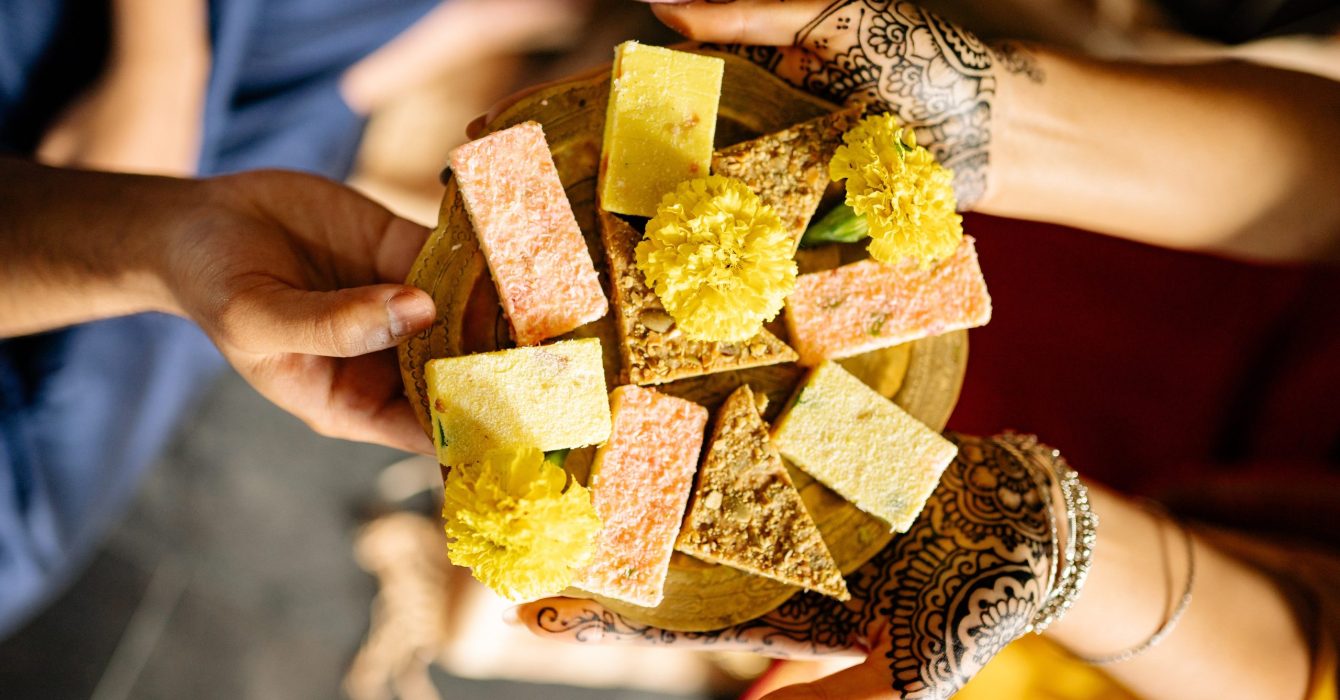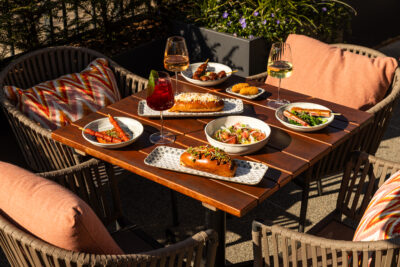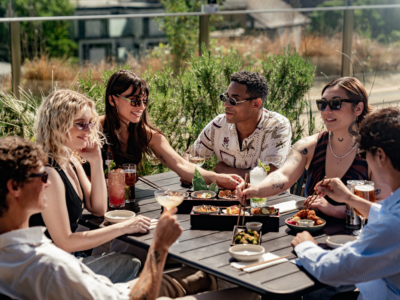Celebrate the festival of lights with these mouth-watering dishes
According to Ramayana, one of the two most well-known legends of Hinduism, (the other being Mahabharata), Hindu god Lord Rama, his wife Sita Devi and brother Lakshmana returned to their kingdom in northern India after being exiled for 14 years, following the defeat of demon king Ravana. As told in the story, the villagers lit a path for Rama’s return.
The Diwali festival, also known as the festival of lights, celebrates this victory of light over darkness (or good over evil), with Hindus around the world lighting candles and fireworks and enjoying a host of festivities over five days during the Hindu lunisolar month Kartika (between mid-October and mid-November) — this year falling on 22-26 October.
But next to the dazzling lights, Diwali is also a celebration of flavours. All kinds of savoury and sweet dishes are made specifically for this festive occasion — from fluffy vegetable samosas to kheer, the Indian version of rice pudding.
If you’re looking to host your own Diwali-inspired lunch or dinner, here are some amazing treats you can make for a sumptuous Indian feast.
Samosas
Working well as a starter or a side dish to complement your favourite curry, the crispy samosa is among the most popular Indian delicacies. This triangular fried or baked pastry dates all the way back to the 10th century, with the first official mention of samosas thought to be attributed to Iranian historian Abolfazl Beyhaqi. It wasn’t long before poet and scholar of the Delhi Sultanate Amir Khusro spoke of samosas prepared from meat, ghee (Indian butter) and onion, while later versions include minced meat, walnuts, pistachios, almonds and spices.
Today, many different types of samosas are served all around India, stuffed with anything from mashed chickpeas to chicken, onions and spinach. Choose your go-to filling, mix in the spices and make the samosa of your dreams — for the vegetable kind, this recipe is a good place to start.

Aloo tikki
Portuguese sailors were the first to introduce potatoes to India in the early 17th century. Now cultivated all around the country, they’re among the main commercial crops in India. This probably explains why these potato (aloo) croquettes (tikki) are so popular. Aloo is now a staple, served at most Indian gatherings, in various forms — aloo tikki is made of boiled potatoes and is usually stuffed with peas or dhal before being served with chutneys or sometimes chickpeas.
For a sophisticated aloo tikki dish, check out this recipe, and for a simple potato snack, try aloo chaat, which is essentially boiled potatoes that are cubed, fried, seasoned and served hot.
Paneer tikka
If you’re looking for a tasty vegetarian alternative to the classic chicken tikka (tikka meaning small chunks in Hindi), consider these cottage cheese cubes instead. Marinated in a spiced, yogurt-based marinade, they’re typically grilled in a tandoor oven but can also be grilled in a regular oven or cooked on the stove.
Tikka dishes are thought to date back to the Mughal dynasty (16th to 18th century), with Mughal rulers primarily found in the north of India, but paneer tikka is now widely available in India. Serve the cubes on skewers or in omelette-coated chapati rolls for a more filling effect with this grilled paneer wrap recipe.
Namakpare
Another savoury treat usually prepared for Diwali, Holi and marriage celebrations is namakpare (or namak para). The word namak means salt and pare means pieces. Also known as ‘nimki’ or ‘spiced diamond cuts’, these crunchy, salty bites are made from a firm, savoury pastry dough, which is rolled and cut into strips, square shapes or — more creatively — diamonds, before being deep fried.
Namakpare can be enjoyed with hot tea and are often included in gift boxes of savoury and sweet snacks, so they can serve as a great Diwali gift, too. To make them for your friends, follow this simple recipe.
Read more: Everything you need for a traditional Turkish breakfast

Gajar ka halwa
No Diwali feast would be complete without a variety of sweets, and gajar ka halwa should be at the top of your list. This sweet, pudding-like dish was first introduced during the Mughal period in Punjab, and its name originates from the Arabic word halwa which means sweet, and gajar, which means carrot in Hindi — the process of cooking halwa is believed to date back to the Ottoman Empire.
The dessert is typically made with a grated vegetable cooked with ghee, sugar and milk, often flavoured with spices and nuts such as almonds. Make your own, following this recipe.
Kheer
Few Indian desserts are as simple yet as mouth-watering as kheer. This rich rice pudding is said to date back to 400 BC, mentioned in the epic texts of Ramayana and Mahabharata, making this one of the oldest foods in the world. The word kheer is thought to have derived from the Sanskrit word kshirika, meaning a dish prepared with milk.
Kheer is made by cooking rice in sweet milk, enriched with ghee and spices such as cardamom and sometimes saffron. On special occasions, it can also include cashews, almonds and pistachios. Try this recipe featuring dried fruit and saffron.
Barfi
Soft, indulgent and, of course, spiced, barfi makes for the perfect fudge to include in your Diwali menu. Made by thickening milk with sugar and other ingredients, it comes in many different variations, including the besan burfi (made with gram flour), kaju barfi (made with cashews), pista barfi (made with ground pistachios), and almond or chocolate barfi.
The name of this marzipan-like sweet comes from the Hindustani (originally Persian) word barf, which means snow. Find out how to cook pistachio, almond or cashew barfi here.
Read more: Flower power: floral foods which could boost your diet

Gujiya
Deep-fried or sometimes baked, these Indian dumplings are traced back to the 13th century, originating in India’s Budhelkhand region, then appearing in the form of a jaggery-honey mixture covered with wheat flour, before being sun-dried. Resembling the Mexican empanadas, the sweet and crisp gujiya is filled with sweetened khoa (milk solids) and dried fruits or nuts and fried in ghee. Try this version with spiced coconut, almonds and raisins, for an interesting spin on this traditional pastry.













